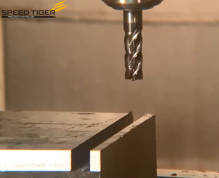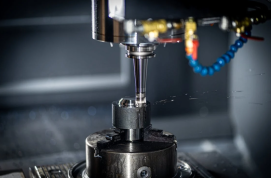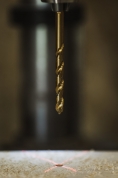SOLUTIONS
Knowledge
The Basic(But Complete) Guide of CNC Router Bits
Complete Guide of CNC Router Bits (Included 9 Types Profile)
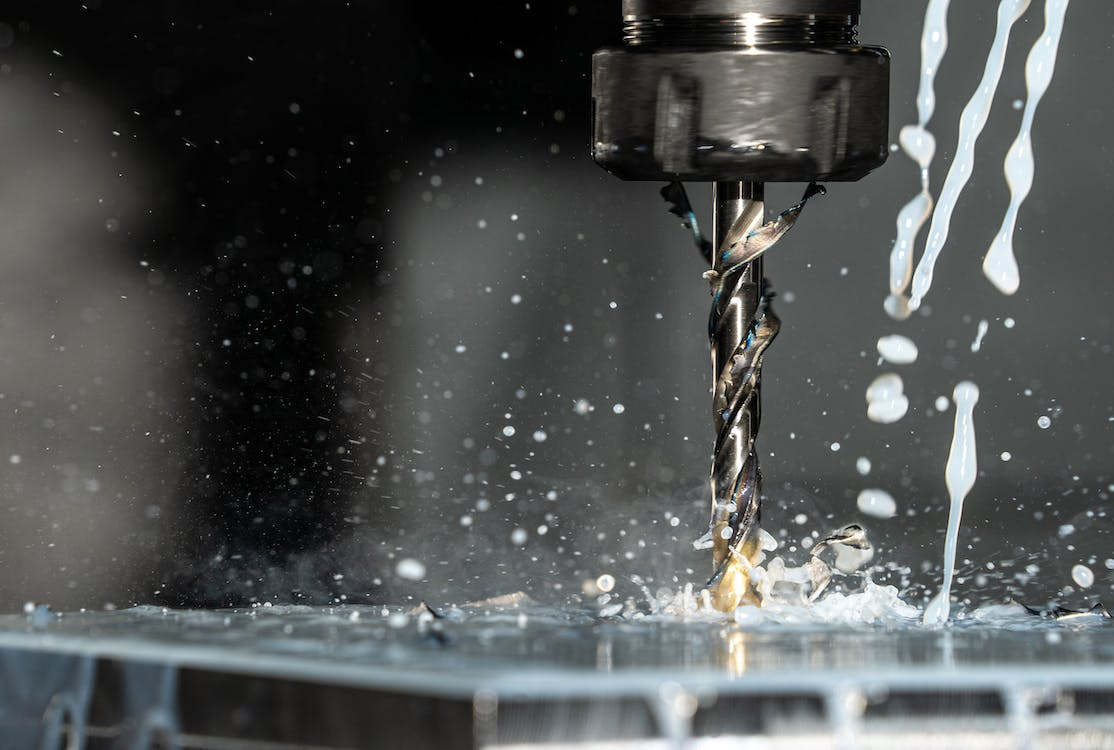
You can use a CNC router for various different projects. Typically, this machine is used for milling, drilling, or cutting multiple materials. When used correctly, you can see stunning results that are impossible to recreate by hand or through other manual machinery.
Plenty of elements and technologies make up a CNC router, but one of the most important aspects is the bit. CNC router bits are critical to getting your rig working effectively. In fact, they can be the difference between a final design that looks pretty good, and one that’s absolutely perfect.
The question is, what are CNC router bits and what should you know about them? This can be a complex topic that throws up lots of additional questions, and it’s easy to get bogged down if you’re a beginner.
So, we have created this basic (but complete) guide that tells you everything you need to know about CNC router bits:
- What Is A CNC Router Bit?
- How Are CNC Router Bits Constructed?
- What Materials Are Bits Made From?
- What Are The Advantages Of CNC Router Bits?
- What Are The Applications Of CNC Router Bits?
- CNC Router Buying Tips
- Speed Tiger Suggested Router Bits
What Is A CNC Router Bit?
Essentially, this is a piece of material that’s used to help you create your designs. It will fit into your CNC router and be used to remove parts of a material based on your specific design. The easiest way to think of this is like a drill bit. When you use a handheld drill, the bit fits into the end and is used to make holes in materials. That’s exactly what a CNC router bit does, only it fits into the router/rig itself.Due to the versatility of a CNC router, you can come across many bits of different designs that serve specific purposes - more on that in the next few sections.
9 Common Types of Router Bits
Here are 8 common and highly searched router bit types, listed in order of popularity:1. Straight Router Bit
Straight router bits have a flat, straight cutting edge and a cylindrical shank. They are the most basic and versatile type of router bit.
Application: Straight router bits are used for making straight cuts, grooves, or dadoes in various materials like wood, plastic, or laminate.
◻️Pros: Versatile, suitable for different types of cuts, widely available, affordable.
◼️Cons: Not suitable for intricate or decorative profiles.
2. Carbide Spiral CNC Router Bits - O Flute
The Carbide Spiral CNC Router Bits-O Flute are specialized cutting tools designed for CNC (Computer Numerical Control) routing machines. These router bits feature a spiral flute design with a single "O" shaped flute, allowing for efficient chip evacuation and improved cutting performance.
Application: The Carbide Spiral CNC Router Bits - O Flute is primarily used for precise cutting, shaping, and grooving operations in various materials such as wood, MDF (Medium-Density Fiberboard), plywood, plastics, and laminates. They are commonly employed in woodworking, sign making, cabinet making, and other CNC routing applications.
◻️Pros:
Clean and precise cuts: The O flute design ensures smooth cutting with reduced chip buildup, resulting in cleaner and more precise cuts.
Efficient chip evacuation: The spiral flute effectively evacuates chips, minimizing the risk of clogging or heat buildup during prolonged cutting.
Versatile: These router bits can handle a wide range of materials, making them suitable for diverse woodworking and CNC routing projects.
Reduced vibrations: The spiral flute design helps to dampen vibrations, leading to smoother cutting and improved overall performance.
◼️Cons:
Limited to softer materials: While these bits work well with softer materials like wood and plastics, they may not be as effective for cutting harder materials such as metal or stone.
Potential for chip re-cutting: In certain circumstances, the spiral flute design may cause chips to be re-cut, leading to a less clean finish on the workpiece.
Higher cost: Carbide router bits, in general, tend to be more expensive compared to other types of router bits, although they offer enhanced durability and longevity.
3. Roundover Router Bit:
Roundover router bits have a curved cutting edge that creates a rounded profile along the edge of the workpiece.
Application: Roundover router bits are commonly used to soften sharp edges and create decorative edges on furniture, cabinets, or trim.
◻️Pros: Creates smooth, rounded edges, adds a decorative touch to projects, available in various sizes.
◼️Cons: Limited to creating rounded profiles, may require multiple passes for larger roundovers.
4. Flush Trim Router Bit :
Flush trim router bits have a bottom-cutting edge and one or more bearing guides. The bearing follows the template while the cutting edge trims the workpiece flush with the template.
Application: Flush trim router bits are used to duplicate or trim the edges of one workpiece to match another, such as when pattern routing or trimming veneers.
◻️Pros: Precise trimming, ideal for pattern routing and template work, produces clean, flush edges.
◼️Cons: Limited to trimming or duplicating existing profiles, may leave marks if not used correctly.
5. Chamfer Router Bit:
Chamfer router bits have an angled cutting edge that creates a beveled edge or chamfer on the workpiece.
Application: Chamfer router bits are used to create decorative beveled edges, remove sharp corners, or create angled joinery in woodworking projects.
◻️Pros: Creates clean, beveled edges, adds a decorative touch, available in various angles and sizes.
◼️Cons: Limited to creating chamfer profiles, may require multiple passes for larger chamfers.
6. Cove Router Bit:
Cove router bits have a concave cutting edge that creates a rounded, concave profile along the edge of the workpiece.
Application: Cove router bits are commonly used for creating decorative edges, moldings, or fluting in woodworking projects.
◻️Pros: Produces smooth, curved profiles, adds a decorative touch, available in various sizes.
◼️Cons: Limited to creating concave profiles, may require multiple passes for larger coves.
7. Rabbeting Router Bit
Rabbeting router bits have a straight or piloted cutting edge that cuts a step-like recess called a rabbet into the edge of the workpiece.
Application: Rabbeting router bits are used for joining boards, creating strong joints, or making recesses for panels in cabinet making and joinery.
◻️Pros: Creates strong joints, versatile for joining and recessing tasks, available in various sizes.
◼️Cons: Limited to creating rabbet profiles, may require multiple passes for deeper rabbets.
8. Roman Ogee Router Bit:
Roman Ogee router bits have a double-curved profile that combines a concave and convex shape, creating an S-shaped decorative edge.
Application: Roman Ogee router bits are commonly used for creating decorative edges on furniture, molding, picture frames, or cabinetry.
◻️Pros: Produces elegant, decorative profiles, adds a classic touch to projects.
◼️Cons: Limited to creating specific S-shaped profiles, may require multiple passes for deeper profiles.
9. Dovetail Router Bit
Dovetail router bits have a unique shape with angled cutting edges that create interlocking joints with a distinctive dovetail shape.
Application: Dovetail router bits are primarily used for creating dovetail joints, which are strong and aesthetically pleasing, in woodworking projects like drawers or boxes.
◻️Pros: Creates strong, interlocking joints, adds a traditional touch, available in various angles and sizes.
◼️Cons: Limited to creating dovetail joints, may require additional accessories for precise spacing.
Please note that router bits may have variations in design, sizes, and materials. Always follow safety guidelines and choose the appropriate router bit for your specific project requirements.
How Are CNC Router Bits Constructed?
Bits are typically constructed out of specific materials designed to withstand the heat generated when performing CNC tasks. Again, we will cover this in a later section. The top part of a bit is usually just a solid material before it moves to the flute, it will then end with the tip - the part of the bit that touches the material you’re working on.What is a flute?
This is arguably the most important part of a CNC bit as it relates to the cutting power of the tool. Teeth is the term used to refer to the cutting edges a bit has, while flutes are the grooves formed between each tooth. The teeth will do the actual cutting while the flutes help to remove the waste material and get it out of the way, preventing any jamming.Generally, there are two main flute types:
- A straight flute, which is parallel to the body of the bit. It will hit the material perpendicular to the direction of rotation, providing a less smooth finish, but it can be used at a higher speed.
- A spiral flute moves along the body of the bit and twists around. This is what a typical drill bit might look like. It always stays in contact with the material and provides a much smoother finish. You can also split spiral flutes into two additional categories: upcut or downcut. An upcut flute will have a clockwise spiral that pulls material away from the cutting surface. A downcut bit will push material down while it cuts, using an anticlockwise spiral. Upcuts tend to leave a smoother finish at the bottom and rougher at the top, while downcuts do the opposite.
- It’s also possible to get something called a compression cut, which provides the best of both worlds. A compression cut bit will have a standard downcut with an upcut tip.
Your CNC router bit will usually come with a flute classification:
- 1-flute bit
- 2-flute bit
- 3-flute bit
- 4-flute bit
What are CNC bit tips?
As mentioned before, the tip is the end part of the bit. You can have all sorts of different tip types depending on the application of the bit. Three of the most common include:- Flat tips
- Ball-nose tips
- V-tips
What Materials Are Bits Made From?
CNC routers often operate at really high speeds, which allows the bits to cut through a range of materials. As a consequence, these high speeds generate a lot of heat and force, meaning the bit must be able to withstand both. It is not uncommon for poor-grade bits to bend or break because the material can’t stand up to it.Generally, these are the top materials you should look for when purchasing a CNC router bit:
- High-speed steel (HSS)
- Solid carbide
- Solid tungsten carbide
- Polycrystalline diamond bits
- Carbide tipped bits
Most bits you’ll find will be either HSS, solid carbide, or carbide tipped. The latter provides a combination of the two, giving you a steel body with carbide at the end. It’s deemed a more cost-effective way to harness the strength of carbide.
What Are The Advantages Of CNC Router Bits?
Primarily, the advantage of a CNC router bit is that it lets you harness the true potential of your CNC router. This gives you the following:- More flexibility with your projects
- More accurate designs
- A long-lasting bit that doesn’t break
- Better finishes - and a wider range of finishes
- Improved speed on your cutting projects
- Complete automation during the cutting process
What Are The Applications Of CNC Router Bits?
Mostly, you can separate CNC router bits into two different categories:- Drill bits
- Milling bits
What are drill bits used for?
Drill bits are used in the same way that you would use a manual drill. They drive down into the material and create holes in the surface. These are extremely useful when you’re looking to cut holes ready for screws or other applications.What are milling bits used for?
CNC milling bits have lots of other names. They are sometimes called end mills, carving bits, or engraving bits. Their purpose is to move laterally across your workpiece material. As a result, they can carve pieces out and create really accurate and stunning designs.This gives milling bits so many different applications during your project. You can use roughing end mill bits to remove a lot of material at once, or you can use face mills to provide a smoother material surface, almost like a sander.
All in all, CNC router bits can be used for drilling, engraving, creating joints, surfacing, and so much more.
CNC Router Buying Tips
If you are interested in buying a CNC router and getting some bits to use with it, there are some common questions to ask yourself beforehand:- How much will it cost? Usually, your budget will determine the type of router you purchase. If this is a hobby, you can find cheaper routers for just a few thousand dollars. If you need one for business use, it is worth investing in a more expensive one with greater capabilities and the ability to handle heavier workloads.
- How big should it be? Again, this depends on your use of it. If you only want something to use as a hobby, pick a small router that can fit in your home or garage. These days, you can buy mini CNC routers or ones designed to fit on a benchtop.
- What is the duty cycle? This refers to how long you can operate your CNC router. A 100% duty cycle means it can operate for the entire specified duration. Let’s say this is 20 minutes. If the duty cycle was 50%, it would only operate for 10 to 20 minutes. Naturally, your duty cycle requirements depend on the projects you’re working on.
- What motor should I pick? Normally, you have to choose between a servo or stepper motor system. Servo motors have 4-12 magnetic poles, while stepper ones boast 50-100. The more poles the better, as this means your machine will be more accurate and precise.
- What CNC bits should I use? This is entirely dependent on your projects and what you will use your CNC router for. However, always ensure that you pick a bit that’s made from one of the materials listed earlier. Also, consider what you are doing and what bits will make sense for your jobs. The likelihood is you will need both drilling and milling bits for most project designs.
Speed Tiger Suggested Router Bits
At Speed Tiger, we offer a variety of CNC router bits that can suit many different applications. This includes upcuts, downcuts, compression cuts, and options with many flute types. There are carving bits, drilling bits, surfacing bits, and more.Here are three products we highly recommend:
① ISEU Carbide Spiral Router Bits Up Cut CNC Router Bits - Constructed of Micro Grain Carbide, this bit is perfect for very hard materials. Resistant to wear and with high cutting performance, it’s ideal if you’re working on wood, aluminum, copper, MDF, or various forms of steel.
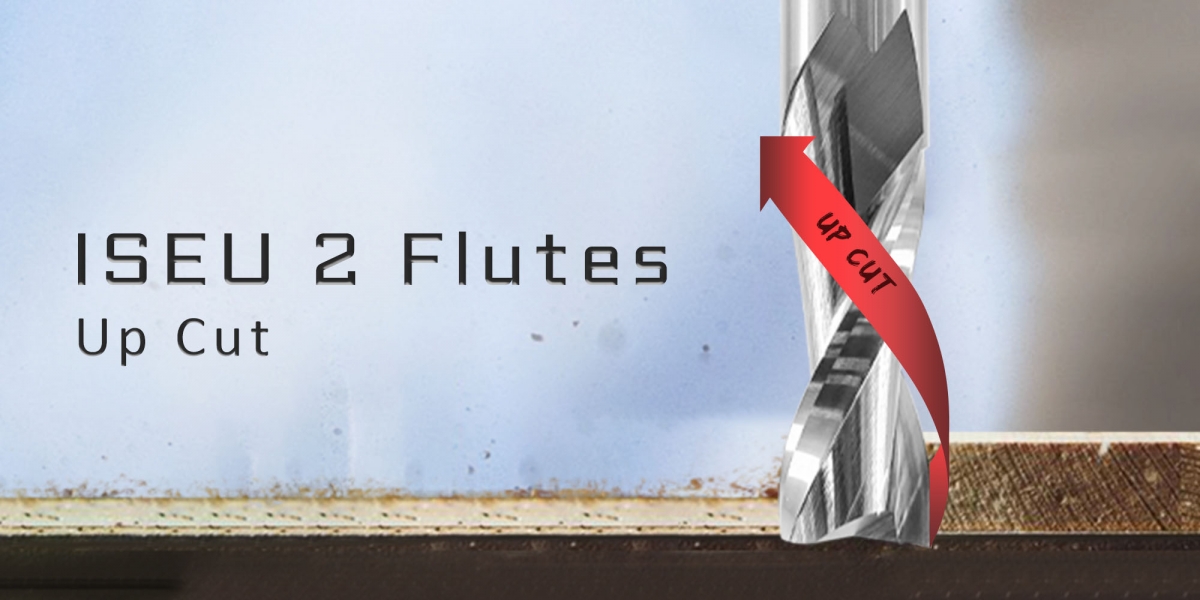
② ICARVE Carving CNC Router Bit Set - Engraving CNC Router Bits - Also made of Micro Grain Carbide for optimal performance and perfect for chamfering, carving V grooves, detail carving, and profiling. Works very well at high speeds on many materials.
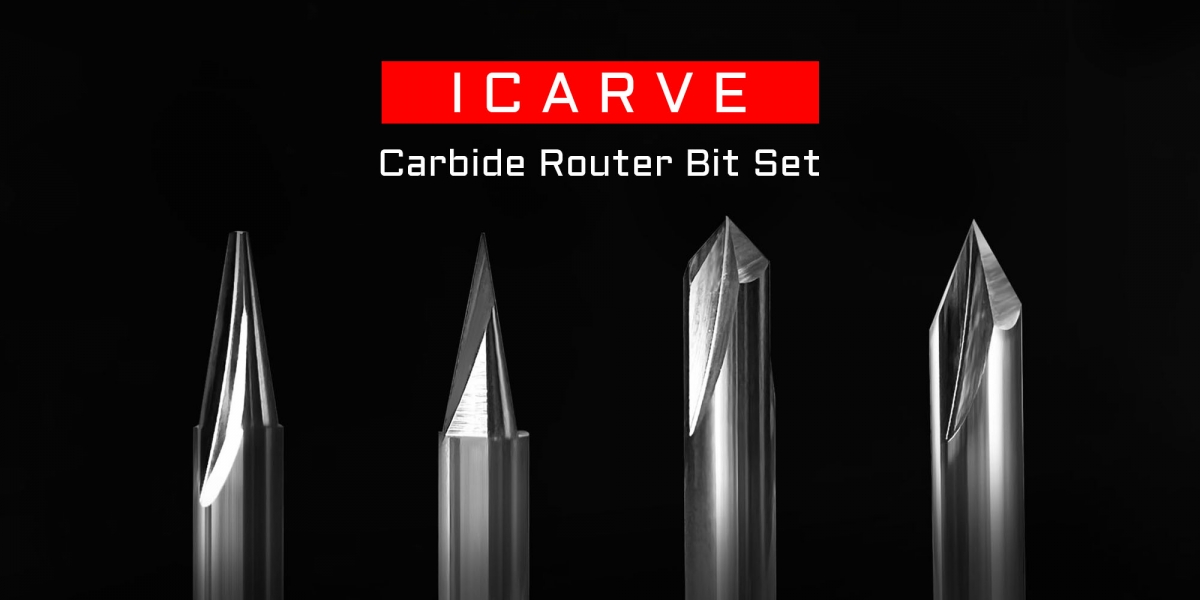
③ ISEUD Carbide Spiral CNC Router Bits - Up Down Compression Bit CNC Router Bits - A compression bit that offers the best of both worlds. Exceptional at working MFC, MDF, plywood, hardwood, and softwood. The cutter is made from Micro Grain Carbide to make it very durable and resistant to wear, giving excellent performance time and time again.
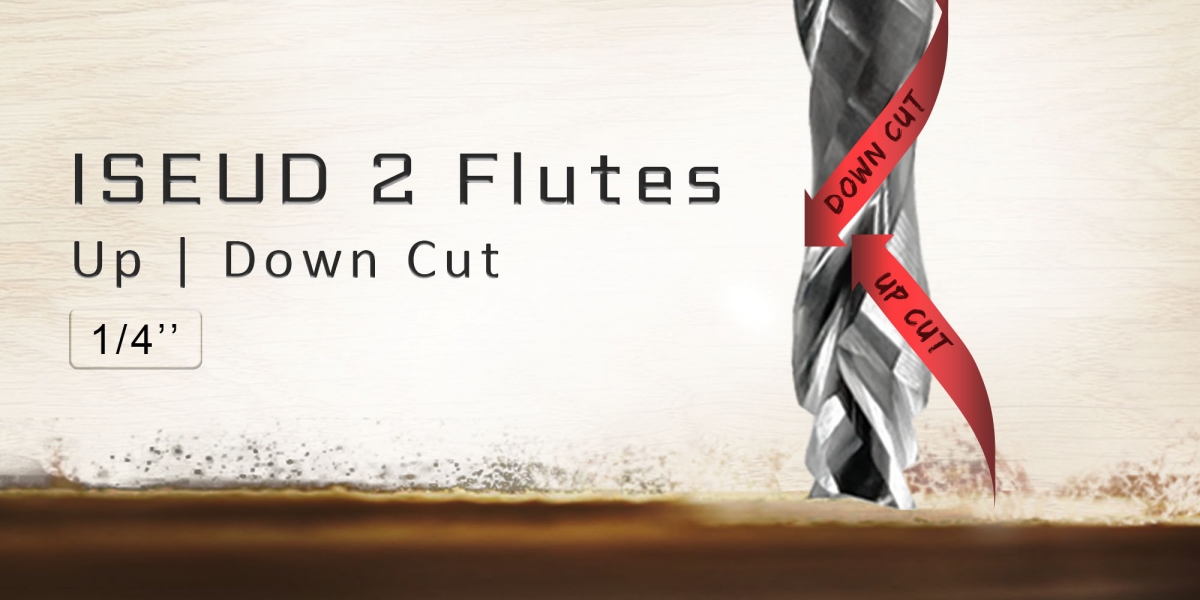
To check out our full collection, click here.
| About Speed Tiger |
Speed Tiger is a professional manufacturer of Carbide Cutting Tools and offers OEM Services, having rich experience in producing carbide cutting tools and processing consultants for more than 24 years.

Established in 1998, Speed Tiger specialized in the production of precision carbide end mills, drills, turning tools, thread mills, and other tungsten carbide steel customized cutting tools. Speed Tiger crafts cutting tools at extreme nanometer precision +-2㎛ to the exact, enabling to achieve professional cutting quality.
Visit our shop to find out more, or check out our solution to continue learning.

OTHER SOLUTIONS
-
Master Guide of CNC Milling: Process & Application Posted 2023-06-07

